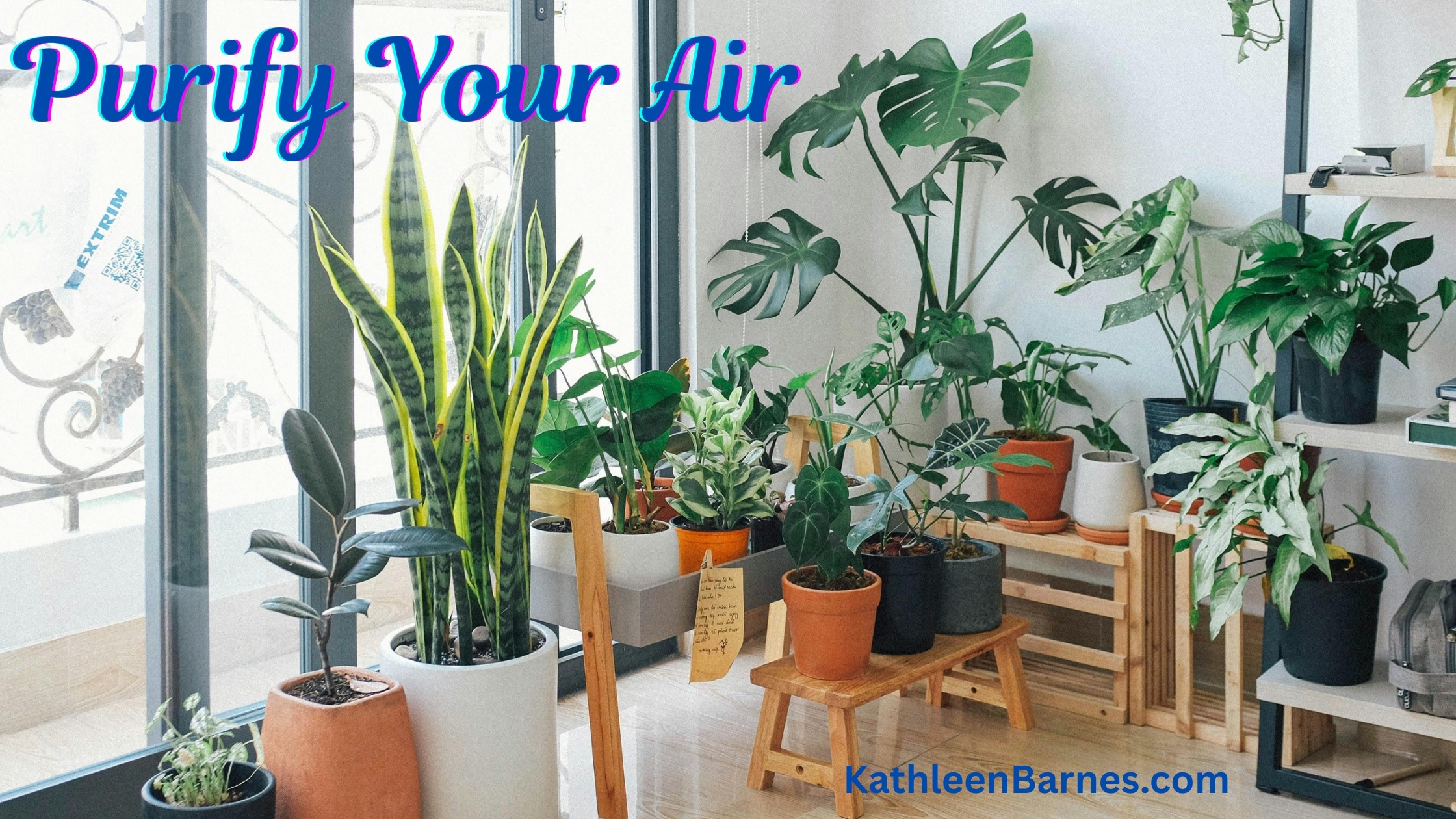 Did you know the air inside your home could be more polluted than the air outside?
Did you know the air inside your home could be more polluted than the air outside?
Between cleaning products, furniture off-gassing, and everyday dust and dander, our indoor spaces can harbor a surprising number of toxins.
Luckily, there’s a natural—and beautiful—solution: indoor plants that purify air.
Not only do houseplants help clean the air, they can also lift your mood, reduce stress, and add life to any room.
But if you’ve ever tried keeping plants alive and ended up with wilted, yellow leaves and guilt-ridden trips to the compost bin, you’re not alone. Many of us have been there.
The good news? Some plants are nearly indestructible—and they work double duty by scrubbing the air of harmful pollutants.
In this post, we’ll look at indoor plants that are both air-purifying and almost impossible to kill, making them perfect for beginners, busy folks, or anyone who thinks they have a “black thumb.”
Let’s dig in (pun intended) and meet your new leafy roommates!
Why Air Quality Matters
When we think of pollution, we often picture smoggy city skylines or factory smoke—but indoor air can be just as problematic.
Everyday items like paint, cleaning products, carpets, and furniture release volatile organic compounds (VOCs) and other harmful toxins into the air.
Without proper ventilation, these pollutants linger, potentially causing headaches, allergies, respiratory issues, and even long-term health effects.
This is where plants come in. According to NASA’s Clean Air Study, certain indoor plants can remove toxins like formaldehyde, benzene, xylene, and trichloroethylene from the air.
They act as natural air filters, absorbing pollutants through their leaves and roots and converting carbon dioxide into oxygen. Some can even boost humidity by releasing moisture vapor—a win-win for your lungs and your skin.
By adding just a few well-chosen plants to your space, you can improve your indoor air quality naturally and beautifully—no filters or gadgets required.
And the best part?
Some of these green heroes practically thrive on neglect.
The List of House Plants That Purify Air
All images are royalty-free stock images unless otherwise credited. Links in Source Box at bottom of the post.
1. Snake Plant (Sansevieria trifasciata)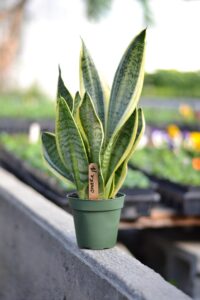
Also known as: Mother-in-Law’s Tongue
If you could give an award to the hardest-working, lowest-maintenance plant, the snake plant would win it every time. With its tall, upright leaves that come in various shades of green (sometimes with yellow edges), this plant adds a sculptural touch to any room—and it’s nearly impossible to kill.
Air-Purifying Benefits
Snake plants are known for removing formaldehyde, benzene, xylene, toluene, and trichloroethylene from the air. They also do something pretty unique: they release oxygen at night, making them an ideal choice for bedrooms.
Care Level: Ultra Low-Maintenance
- Light: Thrives in low light to bright indirect light.
- Water: Water sparingly—only when the soil is dry. Overwatering is the quickest way to harm this plant.
- Bonus: It’s drought-tolerant and does well even if you forget about it for a while.
The snake plant is a tough beauty that thrives on neglect and works overtime to clean your air. If you’re new to plant parenthood, this is a perfect place to start.
2. Pothos (Epipremnum aureum)
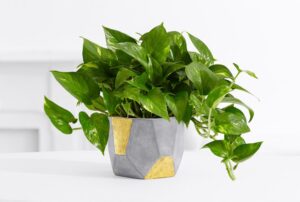
Also known as: Devil’s Ivy
If you’re looking for a plant that grows fast, looks great trailing from a shelf or hanging basket, and survives in just about any condition, pothos is your new best friend. With its heart-shaped leaves that come in green, golden, or variegated varieties, pothos brings a splash of life to any corner of your home.
Air-Purifying Benefits
Pothos is excellent at removing common indoor pollutants like formaldehyde, benzene, xylene, and toluene. Its large leaf surface area helps absorb more toxins while pumping out fresh oxygen.
Care Level: Nearly Foolproof
- Light: Tolerates low light but grows faster in bright, indirect light.
- Water: Water when the top inch of soil is dry. It bounces back quickly if you forget to water now and then.
- Bonus: Can be easily propagated—just snip a vine and pop it in water!
Pothos is a resilient, fast-growing plant that’s hard to mess up. Plus, it gives back with cleaner air and gorgeous greenery that’s easy to train, shape, or let run wild.
3. Peace Lily (Spathiphyllum)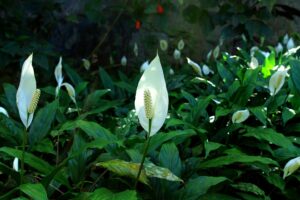
Also known as: Closet Plant
If you want an indoor plant that’s both functional and visually striking, the peace lily delivers. Its deep green leaves and elegant white blooms add a calming, classy touch to any space. Despite its delicate appearance, this plant is surprisingly tough.
Air-Purifying Benefits
The peace lily is a powerhouse when it comes to air purification. It’s been shown to remove formaldehyde, benzene, carbon monoxide, and trichloroethylene—all common indoor toxins.
Care Level: Low to Moderate
- Light: Prefers low to medium, indirect light (too much sun can scorch the leaves).
- Water: Keep the soil moist but not soggy. It will droop dramatically when thirsty—but perk right back up once watered.
- Bonus: Blooms several times a year with the right care, and its flowers are long-lasting.
Peace lilies are ideal if you want something a little more ornamental that still packs a punch in the air-cleaning department. Just a little attention, and they’ll thrive beautifully.
4. Spider Plant (Chlorophytum comosum)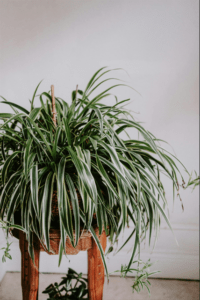
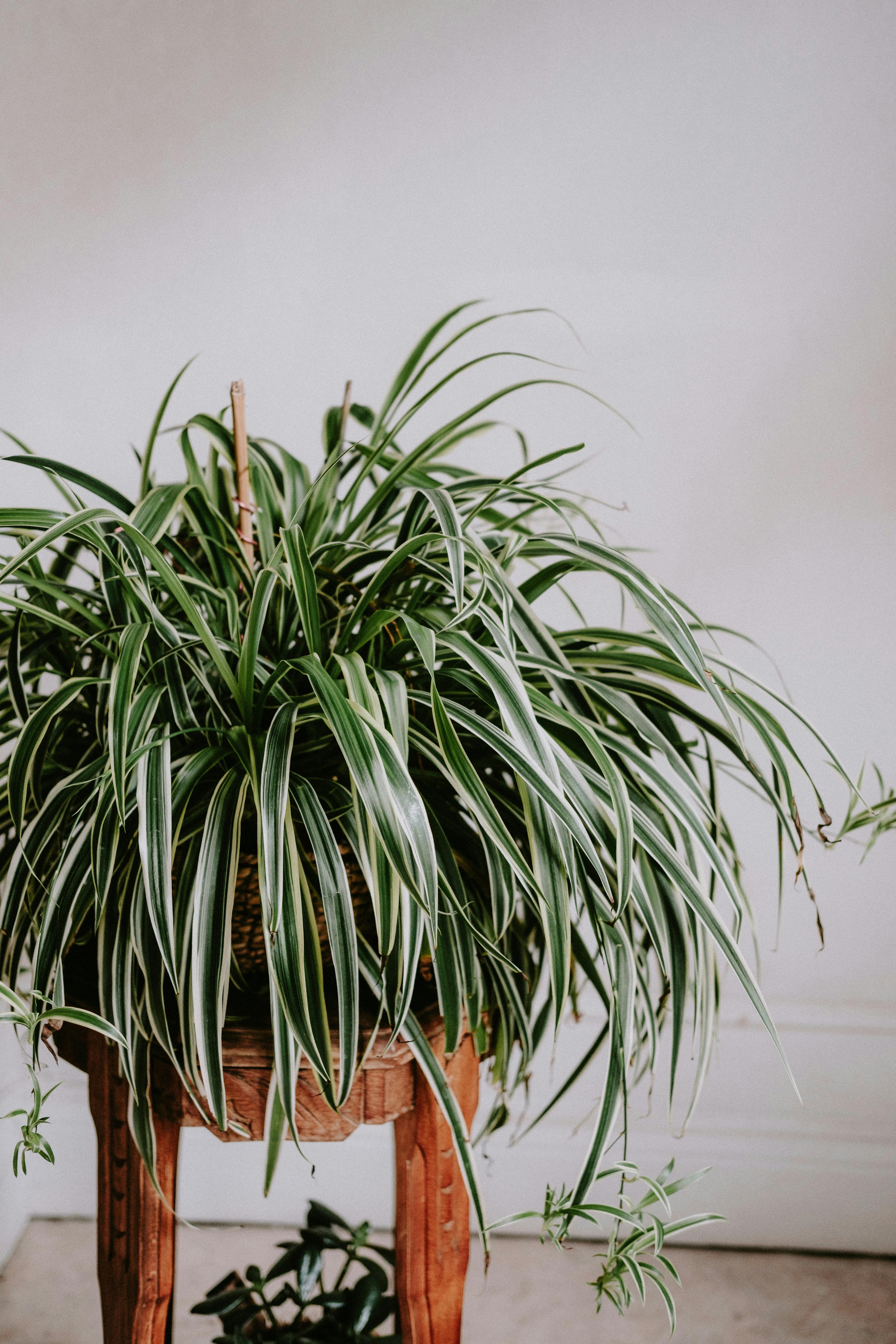
Also known as: Airplane Plant
The spider plant is a classic for a reason. With its arching green-and-white striped leaves and adorable baby “spiderettes” that dangle like little satellites, it’s both playful and practical. This plant is a favorite in homes, offices, and classrooms thanks to its cheerful look and hardiness.
Air-Purifying Benefits
Spider plants are champs at removing formaldehyde, carbon monoxide, and xylene. They’re also known to help reduce airborne mold and allergens, making them a great option for households with pets or kids.
Care Level: Super Easy
- Light: Thrives in bright, indirect light but tolerates low light just fine.
- Water: Let the soil dry out slightly between waterings. They’re very forgiving.
- Bonus: They reproduce quickly—snip off a baby and grow a whole new plant in water!
Spider plants are cheerful, lively, and perfect for beginners. Their ability to propagate like crazy means you’ll never run out of plant gifts for friends, either.
5. ZZ Plant (Zamioculcas zamiifolia)
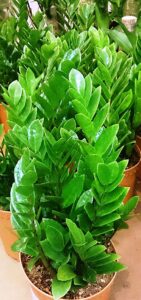
Also known as: Zanzibar Gem
The ZZ plant is the ultimate set-it-and-forget-it greenery. With its thick, glossy leaves and bold, architectural shape, it brings modern style to any room—and it laughs in the face of neglect. If you’ve killed every plant you’ve owned, this might be your redemption arc.
Air-Purifying Benefits
The ZZ plant is effective at filtering xylene, toluene, and benzene from the air. While not as frequently mentioned as others in the NASA study, it’s still a great natural detoxifier.
Care Level: Practically Indestructible
- Light: Prefers bright, indirect light but tolerates low light without complaint.
- Water: Water only when the soil is completely dry—seriously, less is more.
- Bonus: Its waxy leaves naturally repel dust, keeping the plant (and your air) cleaner.
The ZZ plant is a low-maintenance stunner that doesn’t demand attention. It’s ideal for offices, dark corners, and forgetful plant owners alike.
6. Rubber Plant (Ficus elastica)
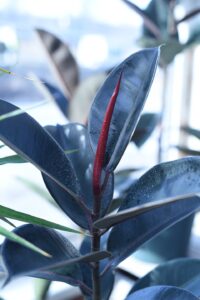
Also known as: Rubber Fig
With its broad, deep green (sometimes burgundy-tinted) leaves and bold upright growth, the rubber plant adds instant drama and elegance to any space. But don’t let its polished look fool you—this plant is tougher than it looks.
Air-Purifying Benefits
Rubber plants are great at removing formaldehyde from the air, a common toxin found in household furniture, cleaning supplies, and flooring. They also help increase humidity, which can ease respiratory issues.
Care Level: Low Maintenance with a Dash of Style
- Light: Prefers bright, indirect light. It can tolerate lower light, but growth may slow.
- Water: Allow the top few inches of soil to dry out before watering. Avoid overwatering, especially in winter.
- Bonus: Wipe the leaves occasionally to keep them shiny and maximize air-purifying benefits.
The rubber plant is perfect for anyone who wants a statement piece that also contributes to cleaner, healthier air. It’s a hardy indoor tree that grows with you—and with very little fuss.
7. Aloe Vera
Also known as: The Plant That Heals
Aloe vera is a timeless favorite, known not just for its ability to clean the air—but also for its soothing gel that helps heal burns, cuts, and skin irritations. It’s a two-for-one plant: practical and purifying.
Air-Purifying Benefits
Aloe vera is effective at removing formaldehyde and benzene, both of which are commonly found in household cleaners and paints. Plus, it adds a fresh touch of desert beauty to any windowsill or shelf.
Care Level: Low Effort, High Reward
- Light: Needs bright, indirect sunlight (a sunny windowsill is ideal).
- Water: Water deeply but infrequently—let the soil dry out completely between waterings.
- Bonus: Break off a leaf for natural first aid (just test on your skin before widespread use).
With its clean lines and healing powers, aloe vera is a perfect plant for kitchens, bathrooms, or anywhere you want a little green energy and natural care.
Bonus Tips for Plant Success
Now that you’ve met your lineup of air-purifying, low-maintenance plant heroes, here are a few simple tips to keep them alive (and thriving) without stress:
1. Don’t Overwater
This is the #1 plant killer. Most hardy houseplants prefer to dry out between waterings. Check the soil first—if it’s still moist, wait a few more days.
2. Use the Right Pots
Make sure your pots have drainage holes to prevent root rot. If your pot doesn’t drain, either repot it or use it as a decorative outer container (with the real plant in a plastic liner).
3. Let There Be Light
Every plant has its light preference—some thrive in bright spots, others love the shadows. Observe where sunlight hits different areas of your home and match plants accordingly.
4. Clean Those Leaves
Dust can block light absorption and clog a plant’s natural filtering system. Gently wipe leaves with a damp cloth every couple of weeks, especially for plants with large, shiny leaves.
5. Rotate for Even Growth
Plants tend to lean toward the light. Give your pots a quarter turn every now and then so your plant grows evenly on all sides.
6. Watch for Warning Signs
Yellowing leaves often mean overwatering. Crispy edges might indicate low humidity. Droopy leaves could just mean your plant is thirsty. Learn your plant’s “language” and it’ll tell you what it needs.
Pet Safety Note
Before you go filling your home with these air-purifying superstars, a quick word of caution: not all houseplants are safe for pets.
Some common indoor plants can be toxic to cats, dogs, or other animals if chewed or ingested.
Here’s a quick breakdown:
Pet-Safe Plants from This List:
- Spider Plant – Non-toxic and a fun favorite for curious cats (though they may chew on the leaves).
- Aloe Vera – Mildly toxic if ingested (despite being healing for humans, it’s not safe for pets).
- Pothos, Peace Lily, Snake Plant, ZZ Plant, Rubber Plant – All are considered toxic to pets if ingested and may cause symptoms like vomiting or mouth irritation.
If you have pets, consider:
- Placing toxic plants out of reach (like on high shelves or in hanging baskets).
- Choosing pet-safe alternatives such as areca palms, calatheas, or parlor palms.
- Checking the ASPCA’s plant toxicity list or consulting your vet when in doubt.
Your leafy friends can coexist peacefully with your furry ones—with a little extra planning.
Image Credit Links
- https://flic.kr/p/2avzWLi
- https://commons.wikimedia.org/w/index.php?title=User:Mokkie&action=edit&redlink=1
- https://commons.wikimedia.org/wiki/User:Karlfonza
Final Thoughts
Indoor plants do more than brighten up a space—they work quietly in the background, purifying your air, boosting your mood, and adding a touch of life to your everyday surroundings.
They’re a simple, affordable way to create a healthier, more inviting home. So whether you’re filling a shelf, freshening your air, or just looking for a living thing that won’t judge you for forgetting to water it—there’s a plant on this list for you.
🌿 Now it’s your turn:
Have a favorite plant that’s easy to care for? Want to share your plant-parent success story (or funny fail)?
Drop it in the comments!

